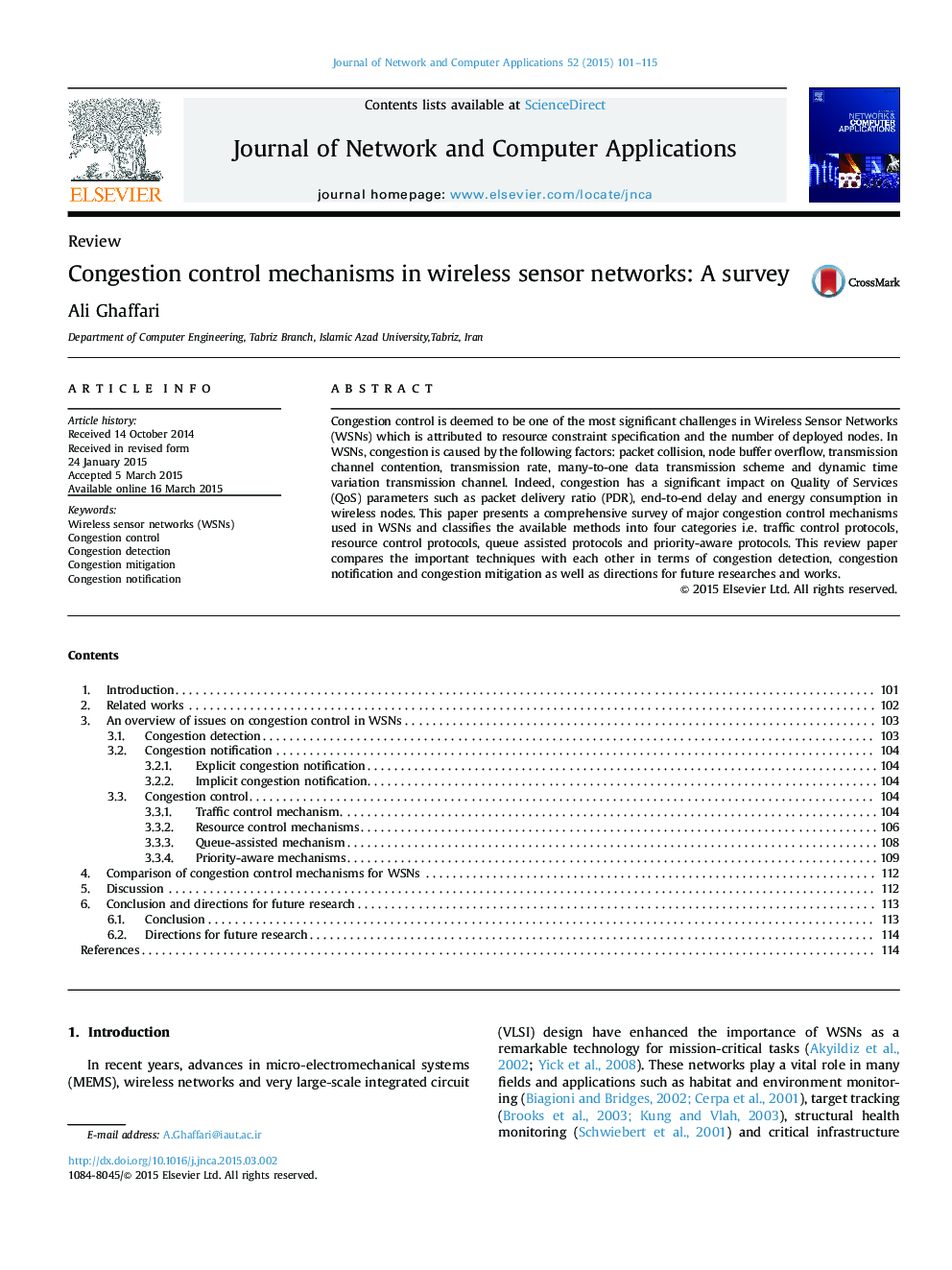| Article ID | Journal | Published Year | Pages | File Type |
|---|---|---|---|---|
| 457087 | Journal of Network and Computer Applications | 2015 | 15 Pages |
Congestion control is deemed to be one of the most significant challenges in Wireless Sensor Networks (WSNs) which is attributed to resource constraint specification and the number of deployed nodes. In WSNs, congestion is caused by the following factors: packet collision, node buffer overflow, transmission channel contention, transmission rate, many-to-one data transmission scheme and dynamic time variation transmission channel. Indeed, congestion has a significant impact on Quality of Services (QoS) parameters such as packet delivery ratio (PDR), end-to-end delay and energy consumption in wireless nodes. This paper presents a comprehensive survey of major congestion control mechanisms used in WSNs and classifies the available methods into four categories i.e. traffic control protocols, resource control protocols, queue assisted protocols and priority-aware protocols. This review paper compares the important techniques with each other in terms of congestion detection, congestion notification and congestion mitigation as well as directions for future researches and works.
